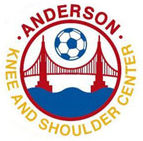PLATELET-RICH PLASMA (PRP)
It has been awhile since I updated the current status on use of Biologics in Orthopedics. Platelet rich plasma (PRP) and mesencymal stem cells (MSC) are the main biologics I will discuss. We have now just completed our first year of deploying Fat derived cells (ADSC) in the office, and our fifth year of injecting PRP into arthritic joints. Our experience has been very positive and I continue to be an advocate of the use of these biologics in well informed patients who have not responded to traditional methods, such as anti-inflammatories, physical therapy or cortisone injection and as an alternative to surgery. It is important to note that PRP and stem cells will not heal a joint that is having mechanical symptoms such as giving way, locking or instability.
I just attended 2 meetings on the use of Biologics in Orthopedics. Many of the world’s best thought leaders and clinicians shared their experiences and opinions on the current indications and use of these biologics.
This blog will focus on recent recommendations from the conferences about platelet rich plasma (PRP), how it works, and where it works, and where it does not. The next blog will talk about Stem Cells.
The use of PRP (platelet rich plasma) is a very straightforward procedure that involves taking blood in the office, spinning it down, concentrating the platelets and injecting it into arthritic joints. Itís best to use PRP that is low in white cells so there is less inflammation for joints. (yellow PRP, not red). The “red” PRP may be better for injecting tendons as having inflammation in a tendon will signal healing. There have been several excellent studies that have shown that PRP is superior and lasts longer than cortisone or hyaluronic acid or lubricant injections. (Arthroscopy, Dai et al., Vol 33. No 3 March 2017.
PRP has been shown to be helpful in not only the knee but the hip. Injections can be repeated, unlike cortisone, which has its long-term negative effects and is best used in acute inflammation. For example, cortisone works very well when you can’t walk because the knee is acutely swollen and painful, or a calcium deposit in the shoulder. In Europe, where most of the long term studies have been done, injecting PRP each month for 3 months, and yearly thereafter has shown the strongest results. Results are not as predictable in severe bone on bone arthritis.
PRP was initially used for tennis elbow, and continues to show excellent results in chronic tennis elbow, Achilles tendinosis, hip “bursitis” and a bit less predictable results in patellar tendinosis. This is an option when all non-interventive treatment fails. It is important to remember that PRP is NOT the first treatment that should be used. It has also shown benefit in acute muscle tears or injuries.
The use of PRP for tendinitis of the rotator cuff and for surgical treatment of rotator cuff tears has not been shown to be superior to placebo in a large Level One study, and there are no studies that show that injecting PRP for partial rotator cuff tears or chronic impingement is any better than steroids or Toradol. The use of a membrane of PRP HAS been shown to improve the healing and reduce the re-tear rate in large to massive cuff tears. We first started using this membrane in 2004, and have had a similar experience.
What’s better? 1 injection …3 injections? There are decent studies on both sides. One study comparing 2 vs 1 injections, showed no difference. (Patel). However, a new double blind randomized study (Gomelli) showed for mild to moderate osteoarthritis of the knee, 3 injections had significantly better results at 6 months than a single PRP injection or HA (Orthovisc), although all improved over a control with saline injected. For advanced OA, 1 injection showed improvement and there was no advantage to 3 injections. My approach has been to do one injection, and repeat as is necessary, or pain begins again. This new study will change my protocol.
